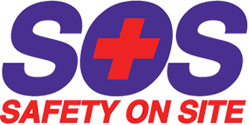
Epinephrine Auto- Injector for Anaphylactic Shock
Hamilton Epinephrine Auto-Injectors in City Properties
All City of Hamilton properties will now be stocked with Epinephrine Auto-Injectors, commonly known as epi-pens, according to a November 15, 2016 report by CHCH. Epinephrine is an emergency medication used to treat anaphylaxis, a serious allergic reaction that can be life-threatening. Having these auto-injectors readily available will save lives and give many people who live with the condition piece of mind.
Both adult and child epipens are available for public and staff to use during public programs at recreation centres, arenas, YWCA-senior centres, and community halls in Hamilton. City facilities will post signs to direct the public and staff to the location of the public-access auto-injectors.
It is estimated that 2.5 million Canadians live with anaphylaxis and that number continues to rise. While the most common trigger of allergic reaction is food, like peanuts and shellfish, other triggers or allergens include latex, medications like penicillin and stings or bites from insects. Sufferers must avoid their triggers in order to prevent a reaction.
Anaphylaxis symptoms may happen suddenly and can progress very quickly. Symptoms include:
Trouble breathing
Hives, rash or swelling
Tightness, scratchiness of the throat
Nausea or vomiting
Abdominal pain
An anaphylactic reaction should be treated right away with an injection of epinephrine, followed by an immediate call to 911.
After you have removed the epipen from the carrier tube, follow these steps to inject the lifesaving medication.
Blue to the sky
Step 1: Hold firmly with the orange tip pointing downward.
Step 2: Remove the blue safety cap by pulling it straight up. Do not bend or twist the cap.
Orange to the thigh
Step 3: Push the orange tip firmly into the mid-outer thigh until you hear a ‘click’.
Step 4: Hold and press against the thigh for about ten seconds.
Step 5: Call 911 after using an Epinephrine Auto-Injector.
Step 6: Place the used epipen back into the carrier tube and give to Emergency Medical personnel.
This decision by City officials is a positive step that will help many Hamilton children and adults living with anaphylaxis.






